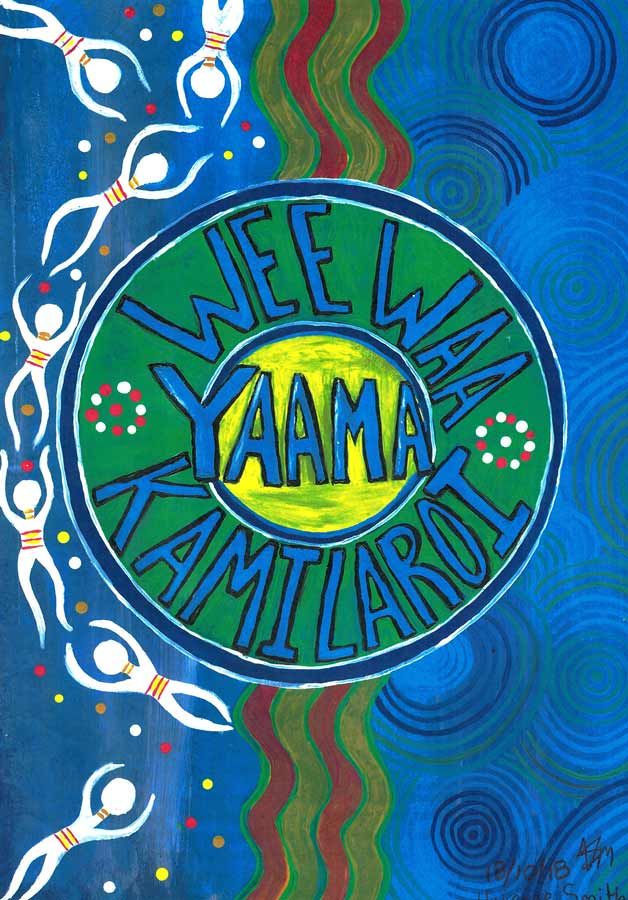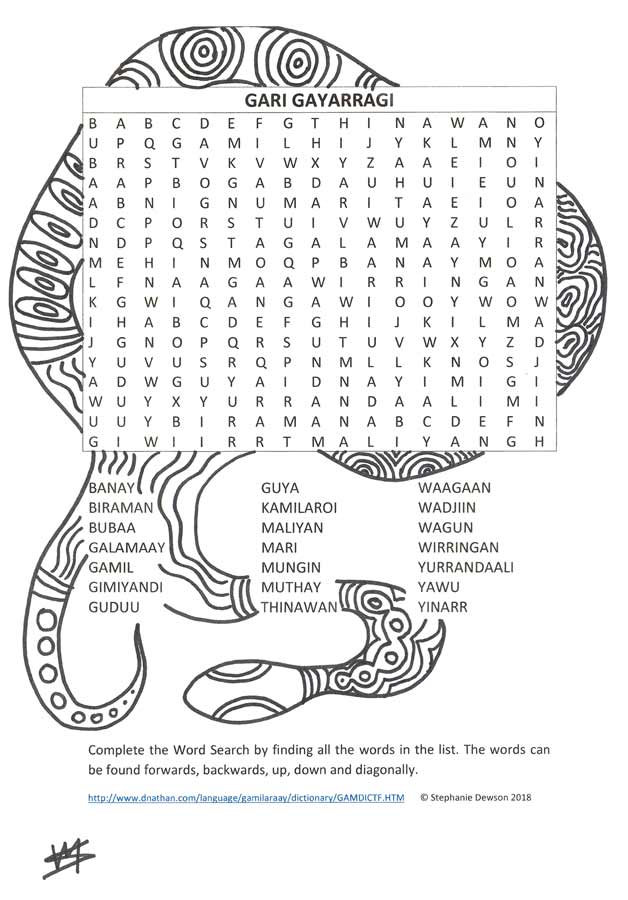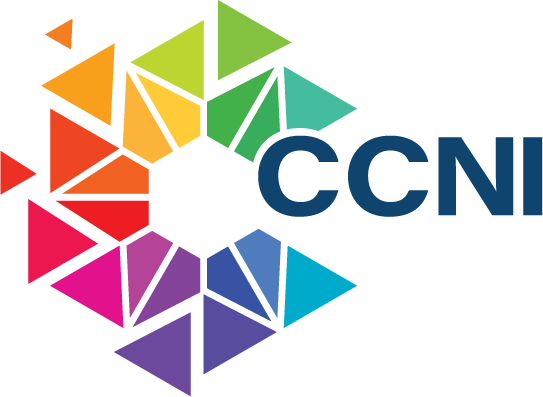FOUNDATION SKILLS
Foundation Skills - Sharing knowledge
In 2018, Narrabri Community College got together with a group of local Wee Waa residents supporting them to research, design and produce a collection of information and activities to share some knowledge of the area and its original people.
The project aimed to use language and literacy classes to research information and create activities highlighting a theme of both the Wee Waa Kamilaroi and the general Kamilaroi nation. This project also provided a focus on learning, literacy and numeracy to create activities of interest and information.
YAAMAGARA
start with
'hello'
The Kamilaroi Nation
While the project focused on the Wee Waa area, it was not only about the local people but the Kamilaroi people in general. The project was inspired by another, carried out in 2003 by a Narrabri Community Education (ACE) group. We thank this group for their inspiration for the Wee Waa version.
Members of the group researched information from several sources including the Internet, publications and recollections from elders of Wee Waa to produce a 28-page resource booklet packed with interesting stories and an introduction to the Kamilaroi language.
Introduction
Wee Waa is known as the cotton capital of Australia. It is the base of the Namoi Cotton Co-operation (the largest grower organisation in the country). Prior to white settlement the area was occupied by the Kamilaroi tribe. Wee Waa translates from the Gamilaraay language to "fire for roasting". The Kamilaroi are an Indigenous Australian people whose lands extended from northern NSW to southern Queensland. They form one of the largest indigenous nations in Australia. The Kamilaroi People were nomadic hunters and gathers. Men typically hunted, cleaned and prepared the food for cooking. The women would do the actual cooking. Women would also do gathering and fishing. Kamilaroi people believe that they are not allowed to eat the animals that were their totems.
One of the last Bora ceremonies ever recorded for the Kamilaroi people was at Wee Waa in 1905. Bora is an initiation ceremony performed for young men coming of age. The word Bora also refers to the site on which the initiation was held where boys having reached puberty achieve the status of men. The initiation ceremony differs in each aboriginal culture. Often it was the skin being scarred with sharp-edge stones or circumcision. Women and children were not allowed to be present at a sacred bora ground where these rituals were undertaken.
The Kamilaroi people found that Wee Waa was rich with resources. The Namoi River supplied drinking water as well as food such as yabbies, fish and mussels. The land provided vegetable foods like yams and roots as well as grain which was made into a bread. They also used certain plants leaves roots as a source of medicines and remedies. Several different animals were also a source of food such as birds, frogs, eggs, kangaroo, emu, goanna, snake, possum and echidna.
The Kamilaroi language is Gamilaraay and their lifestyle is to co-exist with and maintain a balance with nature.
An introduction to the Kamilaroi language 28-page resource booklet
Vivianne's cover design represents the story of the seven sisters which is included in the publication. Five of the sisters represent the 'Saucepan' in the Milky Way and two faint stars represent the missing sisters. The right hand side represents the big river. The sun is the centre circle and the larger circle represents the morning and evening star—the mother.


A project of Wee Waa Foundation Skills 2018
Cover artwork by Vivianne M. Smith


